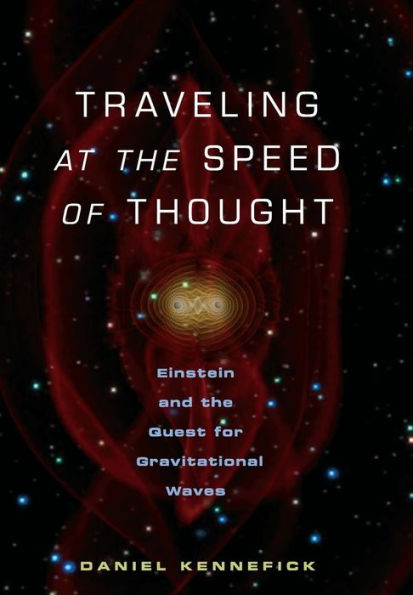Thorne
In this book, Kennefick describes a seventy-year quest, by three generations of physicists, to discover relativity's predictions about gravitational waves. Combining his skills as a historian with his mastery of relativity and his powers as a storyteller, he weaves a compelling narrative of intellectual battles and mathematical struggles—and extracts fascinating insights about the roles of mathematics, intuition, analogy, and style, standards of proof, and the sociology of competing schools.
— Kip S. Thorne, California Institute of Technology
From the Publisher
"This book is a very impressive achievement. Kennefick skillfully introduces readers to some of the most abstruse yet fascinating concepts in modern physics stemming from Einstein's gravitational theory. And he charts the often haphazard, meandering, at times contentious development of these ideas over the course of nearly a century. More than an intellectual history, this book is a kind of detective story. Amid unfolding clues, partial insights, evolving institutions, the play of personalities, and hard thinking, the reader is treated to larger lessons about how theoretical physics works. Until now, we had virtually no serious study of what happened to Einstein's general relativity after he published his famous equations. Kennefick is among the first to begin to fill in this story."—David Kaiser, author of Drawing Theories Apart: The Dispersion of Feynman Diagrams in Postwar Physics"In this book, Kennefick describes a seventy-year quest, by three generations of physicists, to discover relativity's predictions about gravitational waves. Combining his skills as a historian with his mastery of relativity and his powers as a storyteller, he weaves a compelling narrative of intellectual battles and mathematical struggles—and extracts fascinating insights about the roles of mathematics, intuition, analogy, and style, standards of proof, and the sociology of competing schools."—Kip S. Thorne, California Institute of Technology"This book is a very important contribution both to Einstein studies and to the history of physics in general. It is also very timely given the effort underway to detect gravitational waves. The author is in an absolutely unique position to tell this story. He is extremely well connected to the community of Einstein scholars, to the community of physicists past and present working on gravitational waves, and to the group of people working on the history of the subject."—Michel Janssen, University of Minnesota
David Kaiser
This book is a very impressive achievement. Kennefick skillfully introduces readers to some of the most abstruse yet fascinating concepts in modern physics stemming from Einstein's gravitational theory. And he charts the often haphazard, meandering, at times contentious development of these ideas over the course of nearly a century. More than an intellectual history, this book is a kind of detective story. Amid unfolding clues, partial insights, evolving institutions, the play of personalities, and hard thinking, the reader is treated to larger lessons about how theoretical physics works. Until now, we had virtually no serious study of what happened to Einstein's general relativity after he published his famous equations. Kennefick is among the first to begin to fill in this story.
— David Kaiser, author of "Drawing Theories Apart: The Dispersion of Feynman Diagrams in Postwar Physics"
Michel Janssen
This book is a very important contribution both to Einstein studies and to the history of physics in general. It is also very timely given the effort underway to detect gravitational waves. The author is in an absolutely unique position to tell this story. He is extremely well connected to the community of Einstein scholars, to the community of physicists past and present working on gravitational waves, and to the group of people working on the history of the subject.
— Michel Janssen, University of Minnesota






